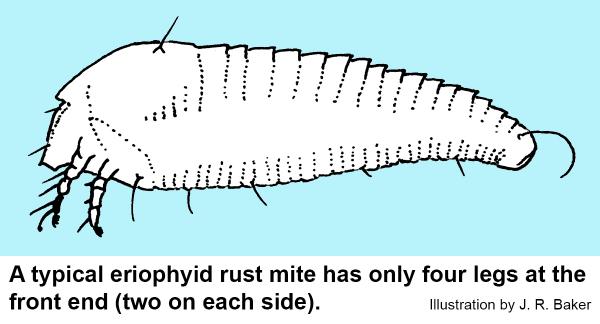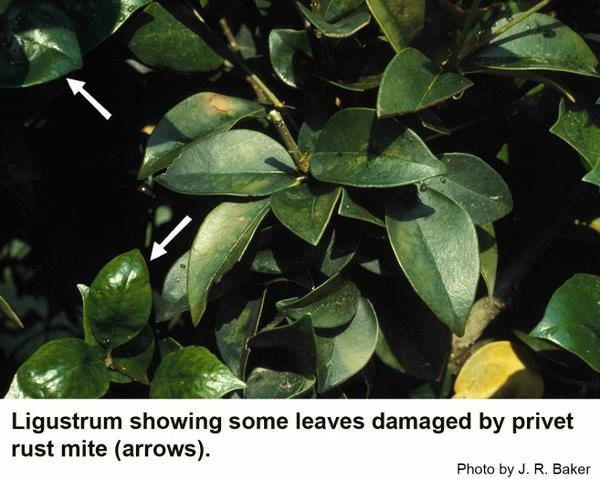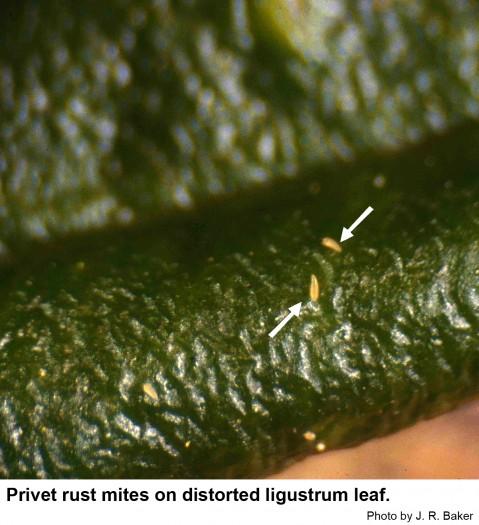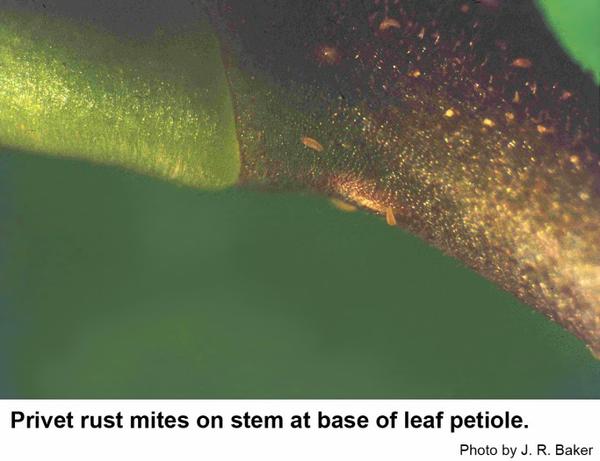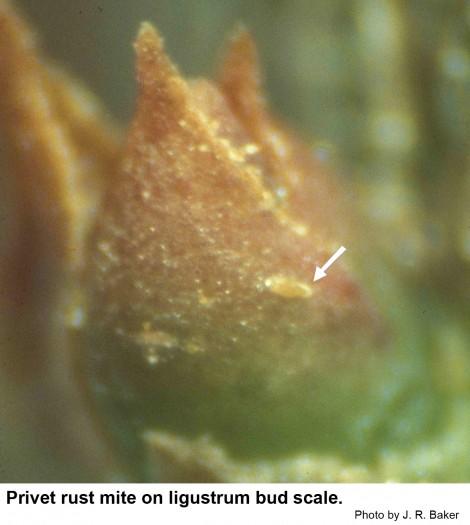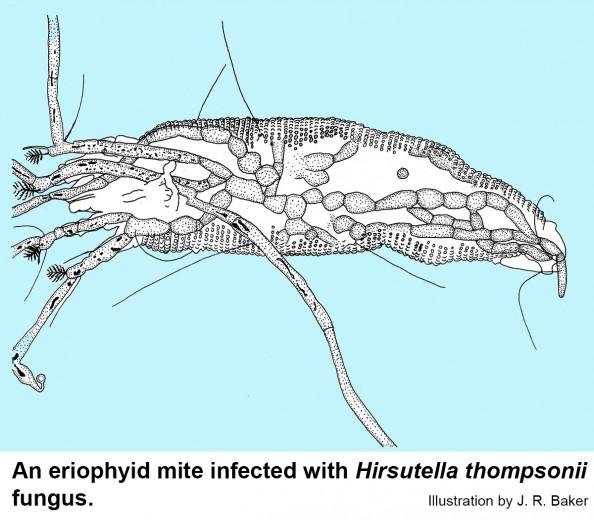Description and Biology
The privet rust mite, Aculus ligustri, is a microscopic mite with teeny-weeny, scissor-like mouthparts that it uses to puncture the epidermis of the leaves of ligustrum to feed. As privet rust mites feed, they inject their saliva possibly to help lubricate the mouthparts or possibly to predigest the tissue they are feeding on. Privet rust mites become active shortly after the leaves begin to develop in spring. The mites multiply rapidly on the leaves and green stems. Hot weather has a deleterious effect on the mite population perhaps because it favors the development of a parasitic fungus, Hirsutella thompsonii. Predaceous mites and insects are also more abundant in hot weather. Consequently in hot, humid weather, privet rust mite populations may drop to almost undetectable levels. During the warm summer period, these mites survive as aestivating females under old bud scales at the base of the current season's growth. With the advent of cool fall weather, the mite population begins to increase again. The typical life cycle of eriophyid mites includes an egg, two nymphal instars, and an adult stage. These mites can develop from eggs to adults in one week under favorable conditions. They can be distributed to other privets by wind, insects, and birds.
Host Plants
Eriophyid mites tend to be very limited in the plants they can infest. Privet rust mite infests Chinese and other privets. Their saliva has powerful enzymes that act as plant growth regulators on young leaves, causing leaves to become distorted as they enlarge. On older leaves, the damage is apparent as minute pale flecks or stipples, which, when abundant, give the overall shrub a grayish cast. Heavy populations of privet bud mites may cause premature defoliation.
Residential Recommendation
Fortunately, privet rust mites are susceptible to the pesticides Sevin and Orthene. Sevin is readily available and not particularly toxic to humans and pets.
References
- An Illustrated Guide to Plant Abnormalities Caused by Eriophyid Mites in North America. Keifer, H. H., et al. 1982. USDA ARS Agr. Handbook No. 573. 178 pages.
- Eriophyid Mites, bud, blister, gall, and rust mites. Davis, R. S. and T. Beddes. 2011. Utah State Univ. Ext. & Utah Plant Pest Diagnostic Lab. Fact Sheet Series ENT-149-11.
- Insect and Related Pests of Shrubs. Baker, J. R. ed. 1980. NC Agricultural Extension Service publication AG-189. 199 pp.
- Extension Plant Pathology Publications and Factsheets
- Horticultural Science Publications
- North Carolina Agricultural Chemicals Manual
For assistance with a specific problem, contact your local N.C. Cooperative Extension center.
This Factsheet has not been peer reviewed.
Publication date: Nov. 5, 2013
Reviewed/Revised: Oct. 11, 2019
Recommendations for the use of agricultural chemicals are included in this publication as a convenience to the reader. The use of brand names and any mention or listing of commercial products or services in this publication does not imply endorsement by NC State University or N.C. A&T State University nor discrimination against similar products or services not mentioned. Individuals who use agricultural chemicals are responsible for ensuring that the intended use complies with current regulations and conforms to the product label. Be sure to obtain current information about usage regulations and examine a current product label before applying any chemical. For assistance, contact your local N.C. Cooperative Extension county center.
N.C. Cooperative Extension prohibits discrimination and harassment regardless of age, color, disability, family and marital status, gender identity, national origin, political beliefs, race, religion, sex (including pregnancy), sexual orientation and veteran status.

